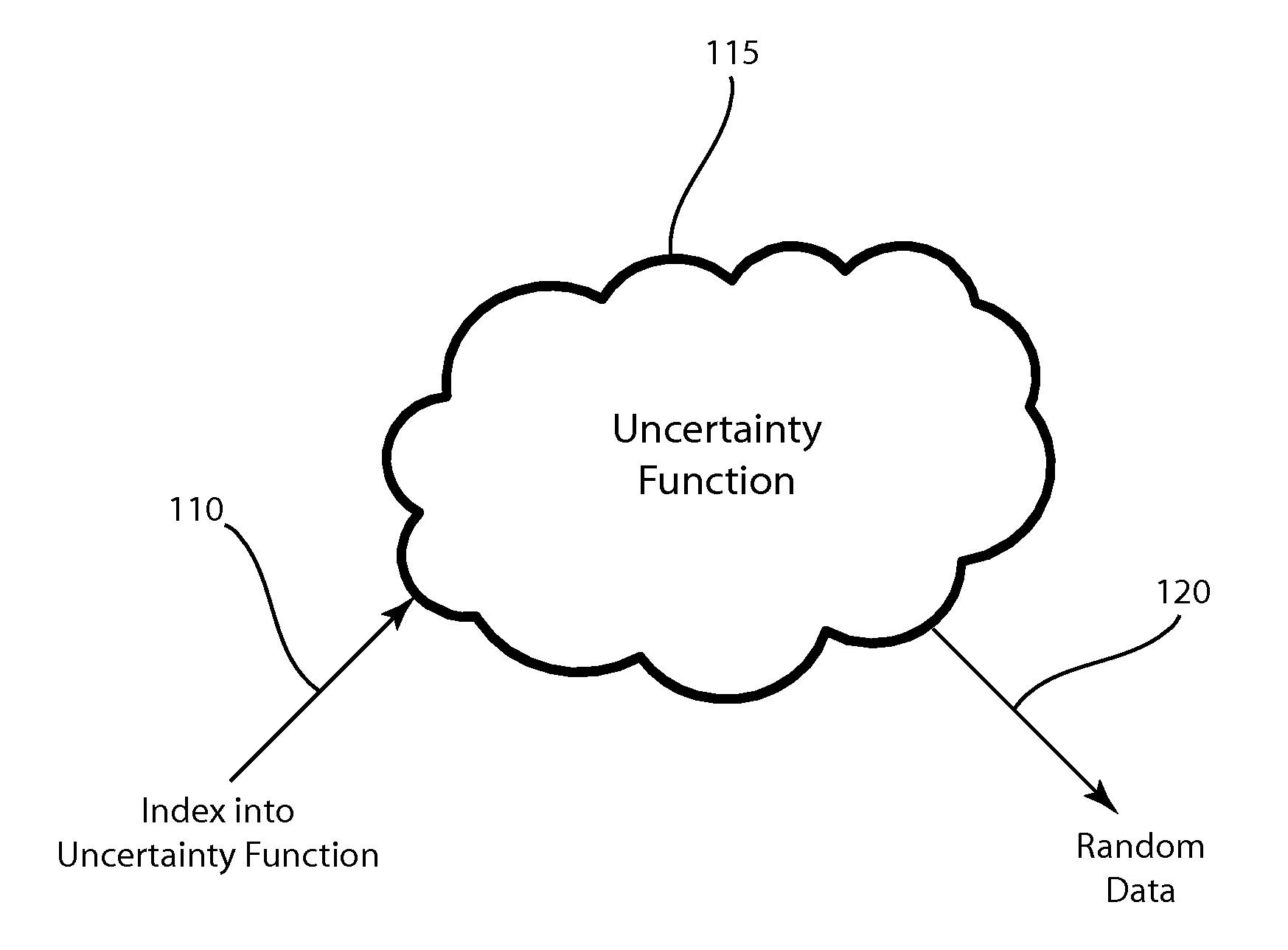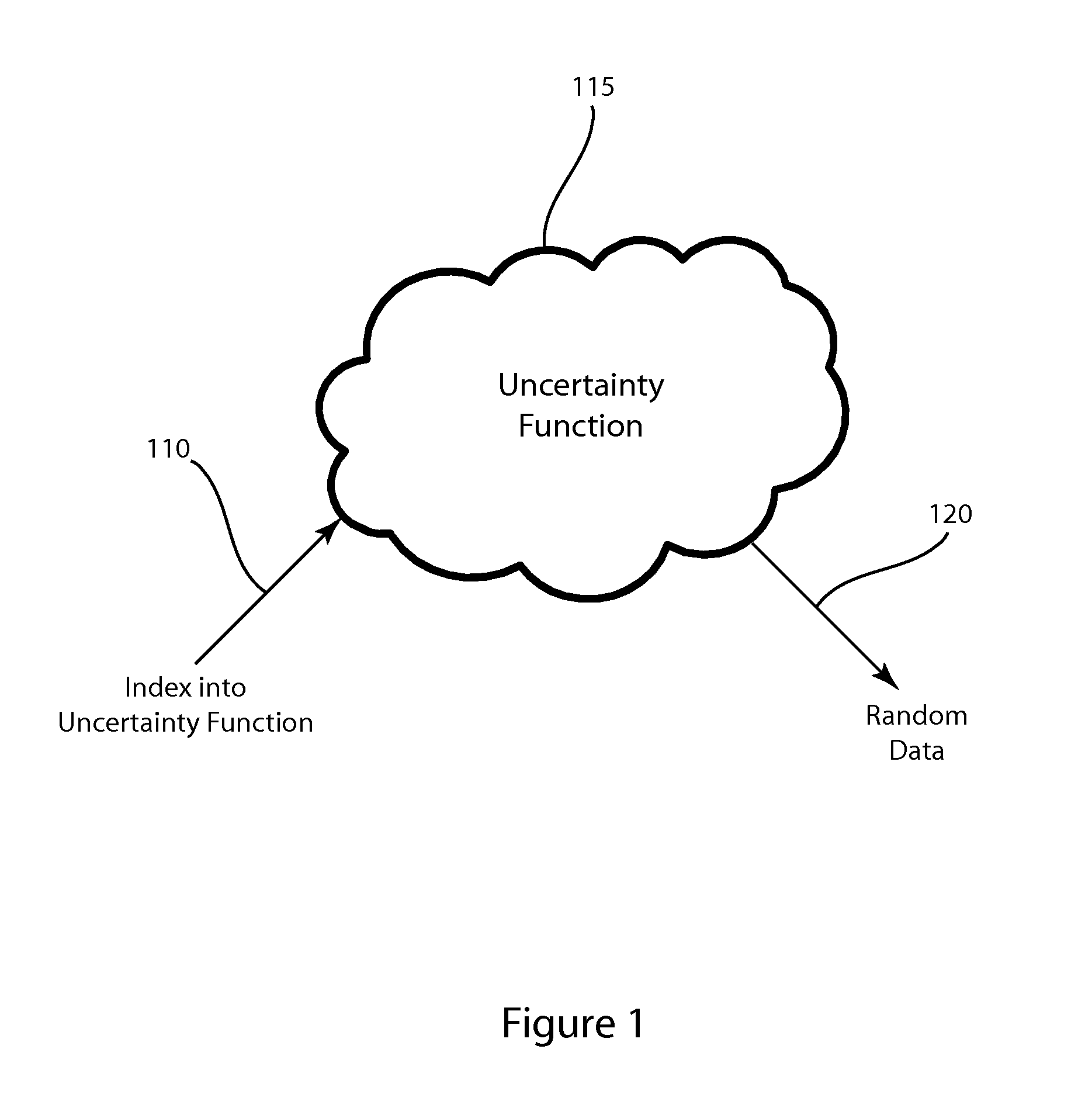Modular uncertainty random value generator and method
- Summary
- Abstract
- Description
- Claims
- Application Information
AI Technical Summary
Benefits of technology
Problems solved by technology
Method used
Image
Examples
hardware example 1
[0291]A significant part of the data paradox problem came from using pseudorandom functions to address into the data pool. The use of a short cycle process 1100a can also be applied to decouple data as well as addresses. FIG. 17 is a system flow diagram depicting hardware example 1 comprised of two short cycle processes 1400a and 1400b being used to create a safe random data stream 1190. A first short cycle process 1400a is used to create addresses 1120a to pull data values from a data pool 1150 creating uncertainty data 1170. The incorporation of a second short cycle process 1400b that creates a data stream 1120b to be XORed 1180 with uncertainty data 1170 provides an uncertainty random data stream 1190.
[0292]As a rule, engineering is a constant struggle of making the correct tradeoffs. For hardware example 1 these tradeoffs were made to drive the hardware cost down to a minimum. The size of the supported random data volume is undefined. Using the idea of the third plane of randomn...
hardware example 2
[0295]When contrasting the short cycle process with a hybrid mask URNG process, the latter exploits the added safety of the mask generator as the decoupling process. This increased safety comes at a somewhat lower performance (the hybrid design requires more input values for three short cycle blocks). The hybrid mask process requires additional hardware elements (short cycle block and mask generator) that increase gate count. Fortunately, the added effort achieves increased production of safer random data.
unsigned long address, data0, data1, mask, output;address = short_cycle_block0( );data0 = short_cycle_block1( );data1 = short_cycle_block2( );mask = data_pool[ address ]; / / get uncertain mask via relatively nondeterministic address / / decouple relatively uncertain data with uncertain maskoutput = ({tilde over ( )}mask & data0) | (mask & data1);
[0296]While the performance has dropped slightly from the short cycle URNG, a few obvious upgrades also apply: virtual c...
hardware example 3
[0297]Reaching the goal of a “paradox safe” URNG requires all deterministic behavior be removed from both addresses (domain values) and data (range values). The production of one nondeterministic output value requires decoupling, using a mask or chaos engine, of domain and range values. The safe URNG enables the production of very large volumes of random data. One key advantage of the safe URNG is the relaxed requirements on session data. Almost any validated session data will function correctly with the safe URNG. This might be important for applications that automatically generate unique session data.
[0298]Full classic blocks are required to guarantee maximum differentiated cycle lengths as well as good addressing coverage over the pool of uncertainty. This includes the routing of classic block outputs to any part of the design. Stepping over the initialization as an effort left to the designer, there are three major task.
[0299]Following the standard outline for each URNG: Step 1 ...
PUM
 Login to View More
Login to View More Abstract
Description
Claims
Application Information
 Login to View More
Login to View More - R&D
- Intellectual Property
- Life Sciences
- Materials
- Tech Scout
- Unparalleled Data Quality
- Higher Quality Content
- 60% Fewer Hallucinations
Browse by: Latest US Patents, China's latest patents, Technical Efficacy Thesaurus, Application Domain, Technology Topic, Popular Technical Reports.
© 2025 PatSnap. All rights reserved.Legal|Privacy policy|Modern Slavery Act Transparency Statement|Sitemap|About US| Contact US: help@patsnap.com



